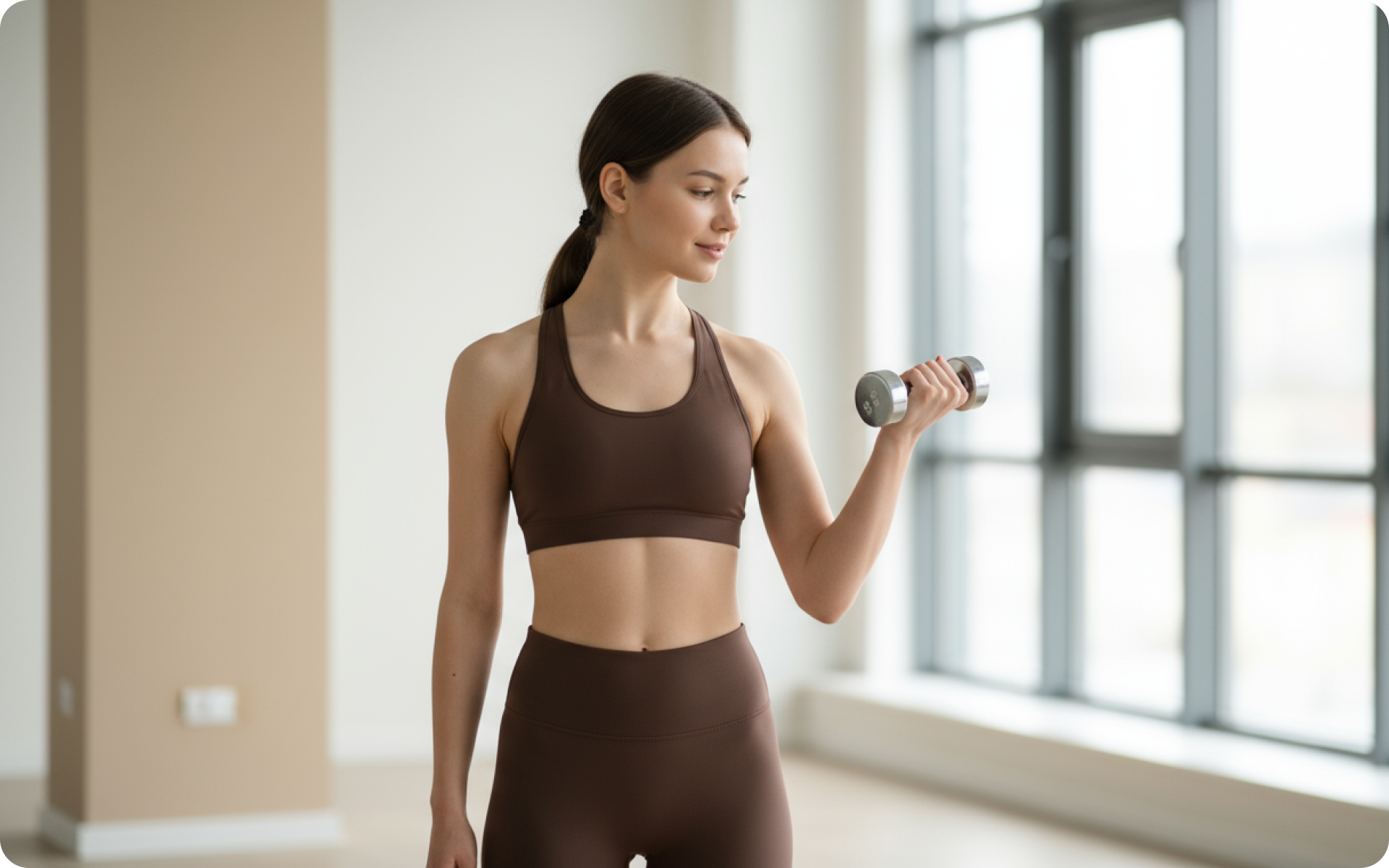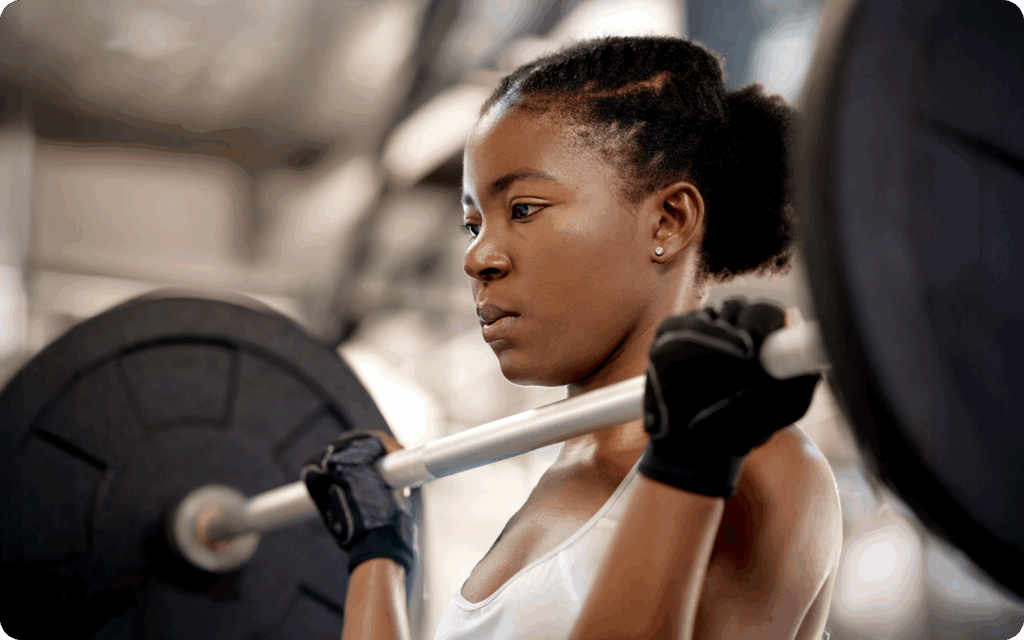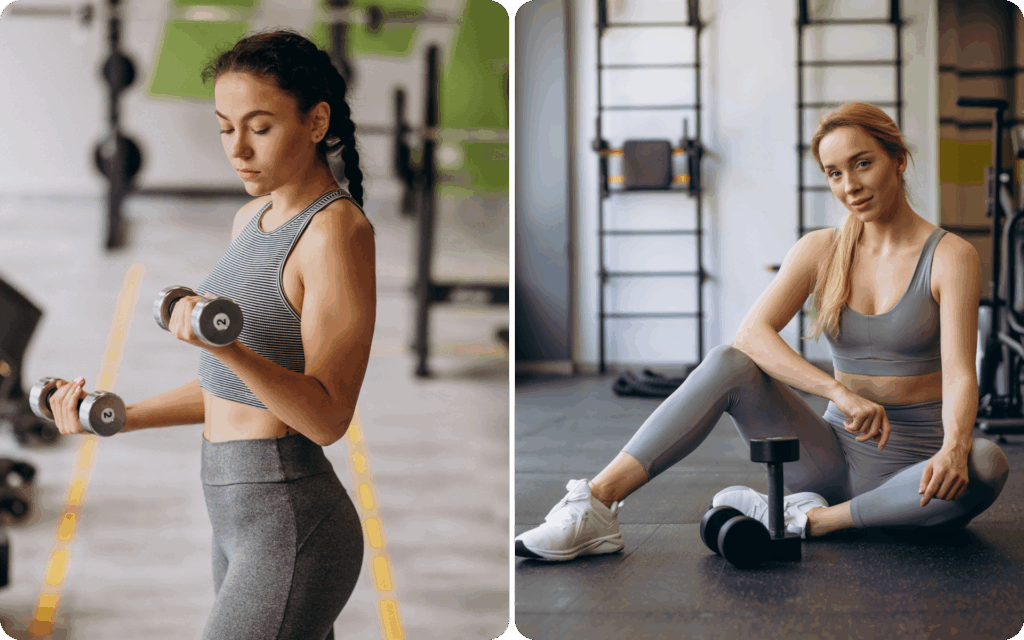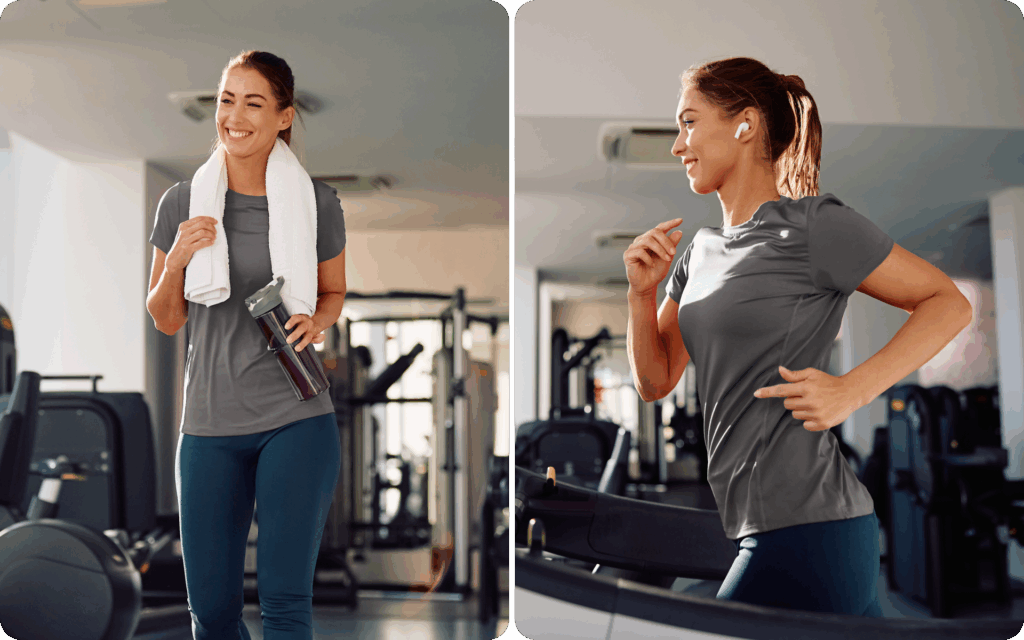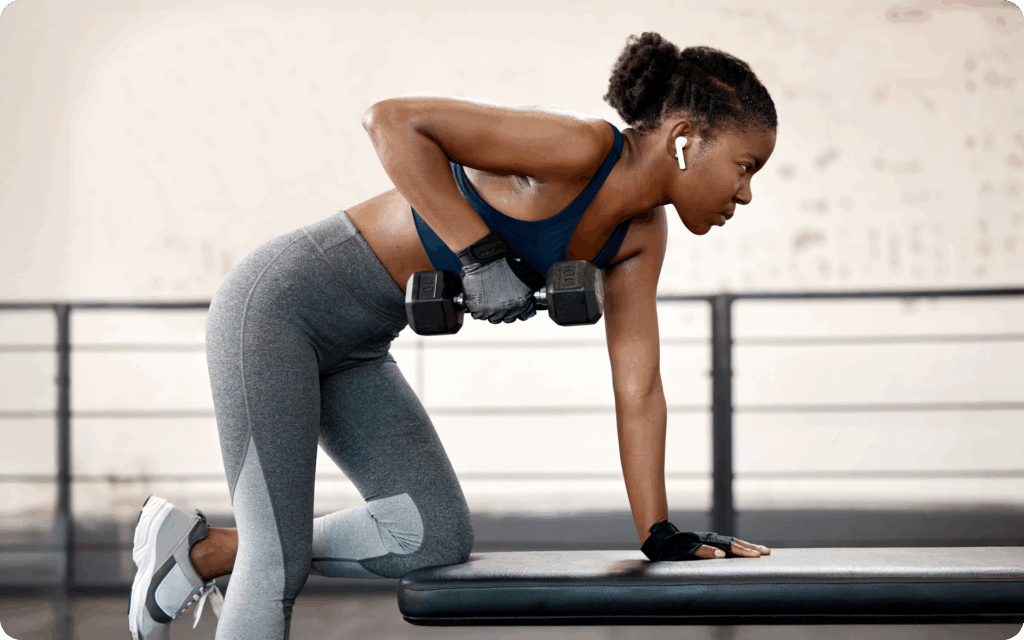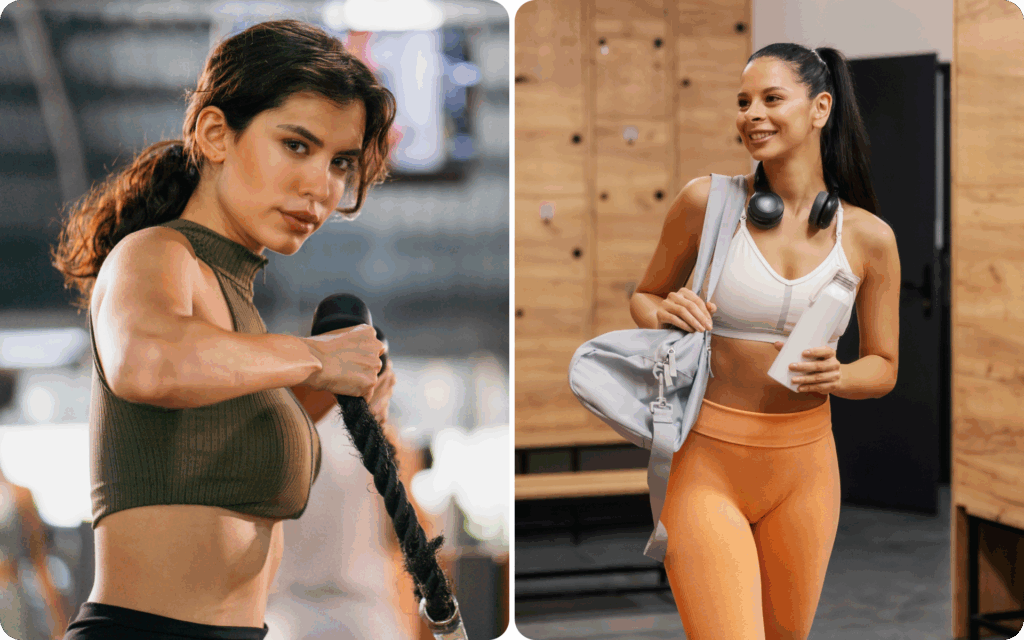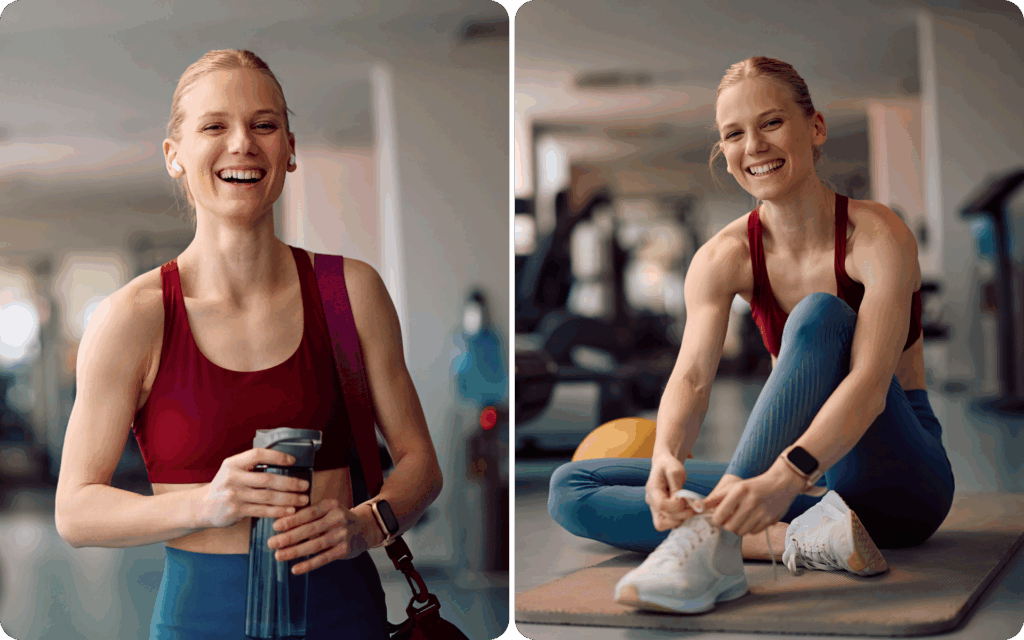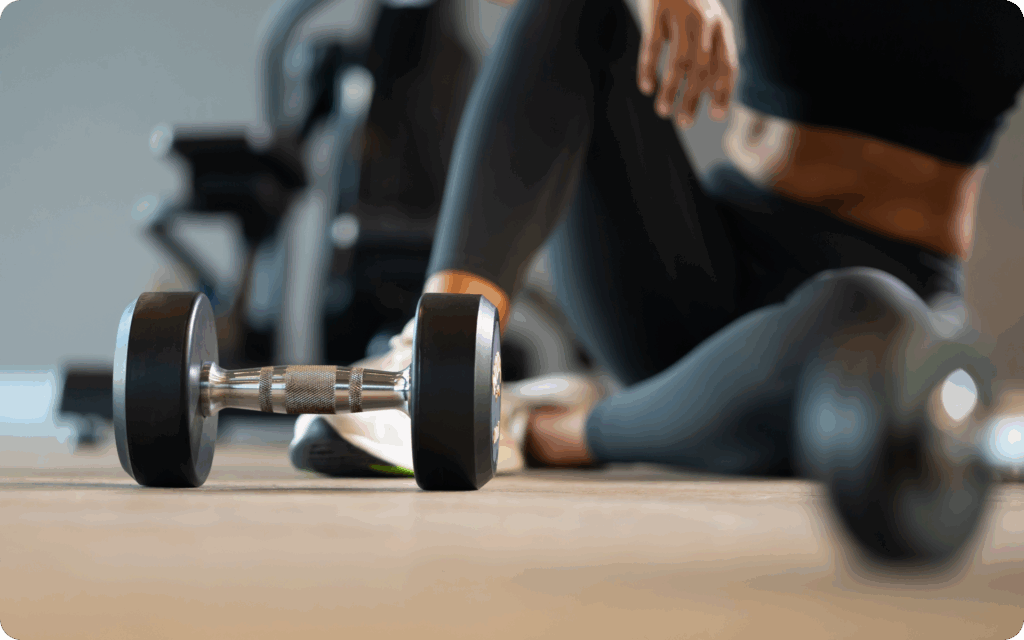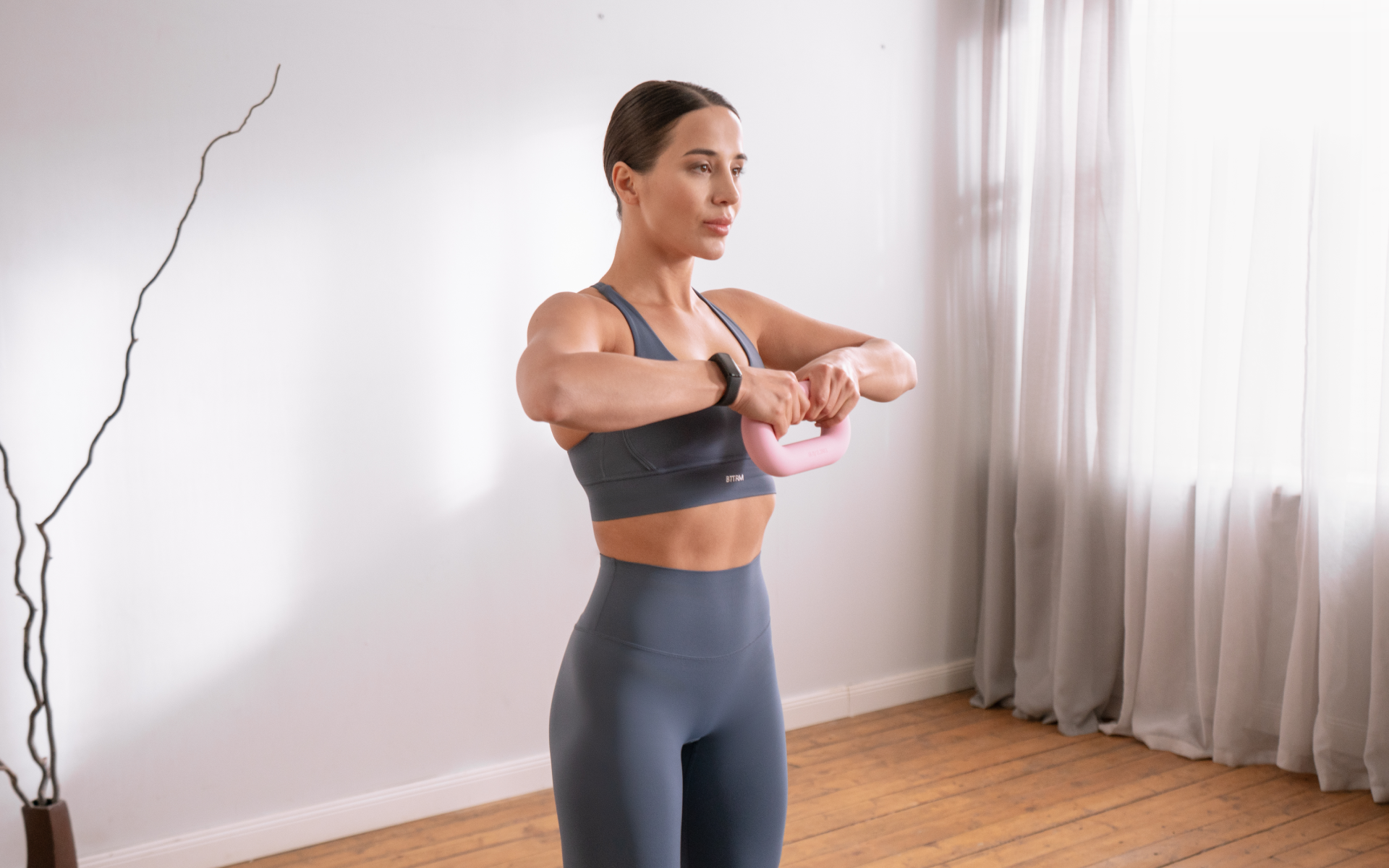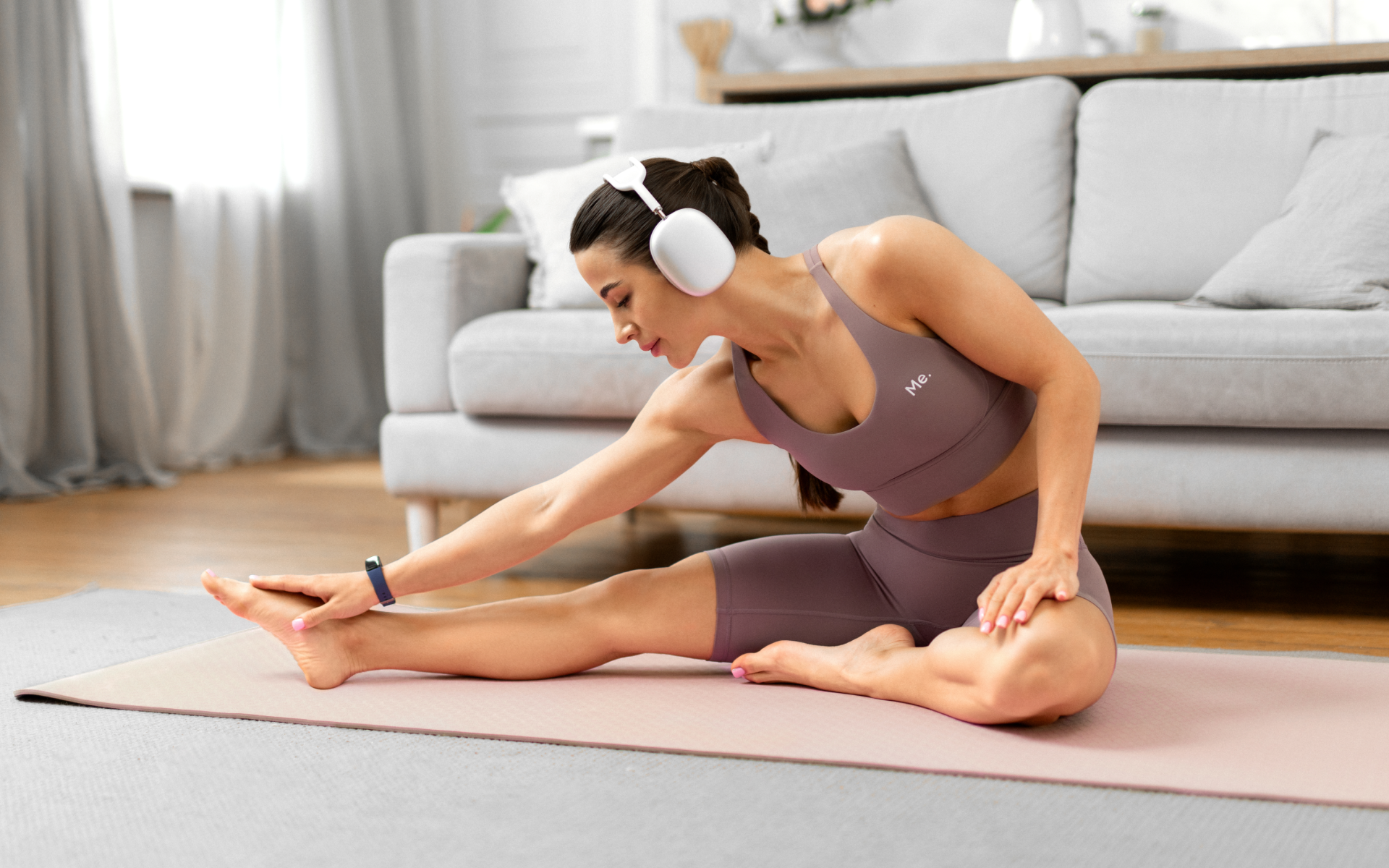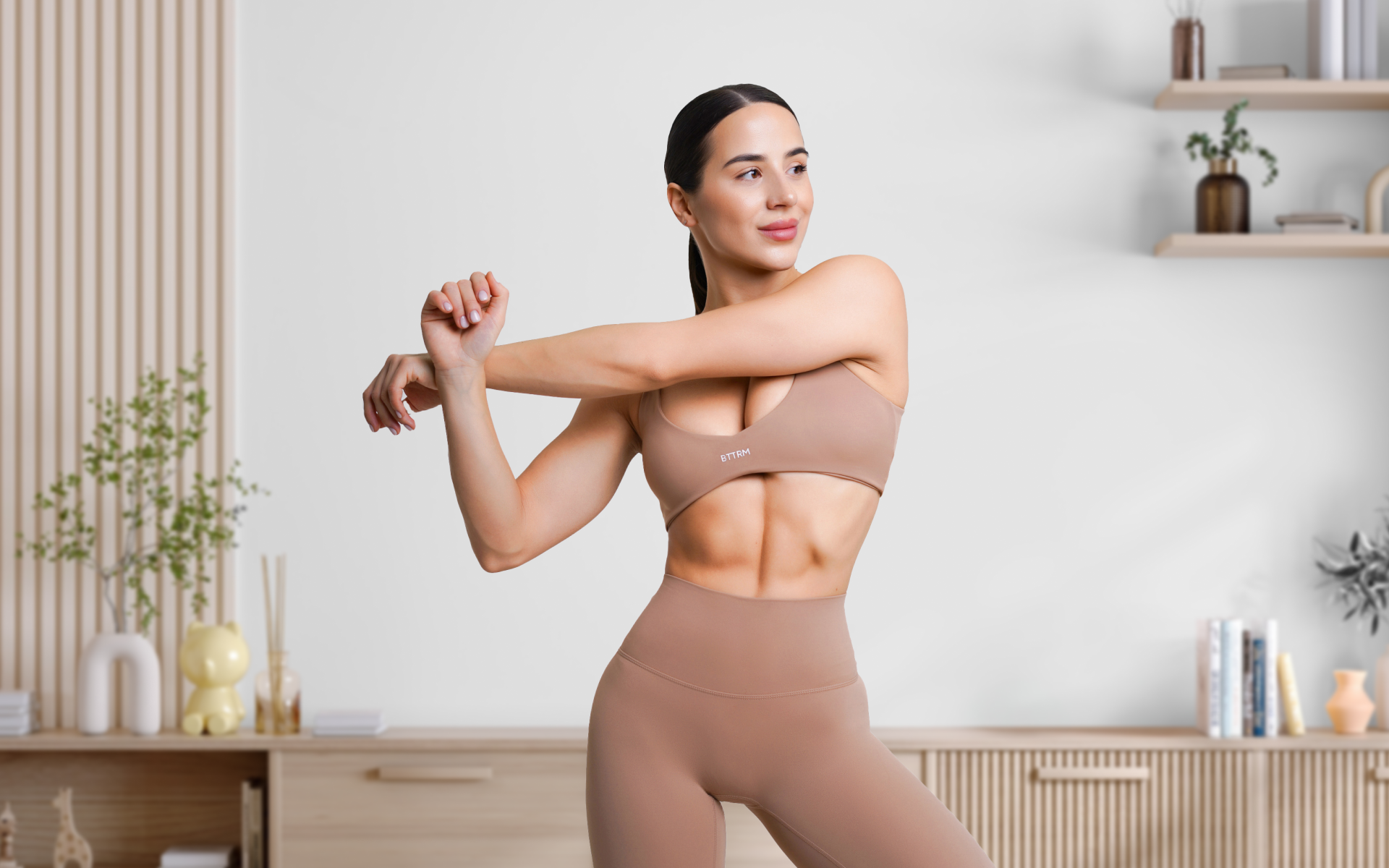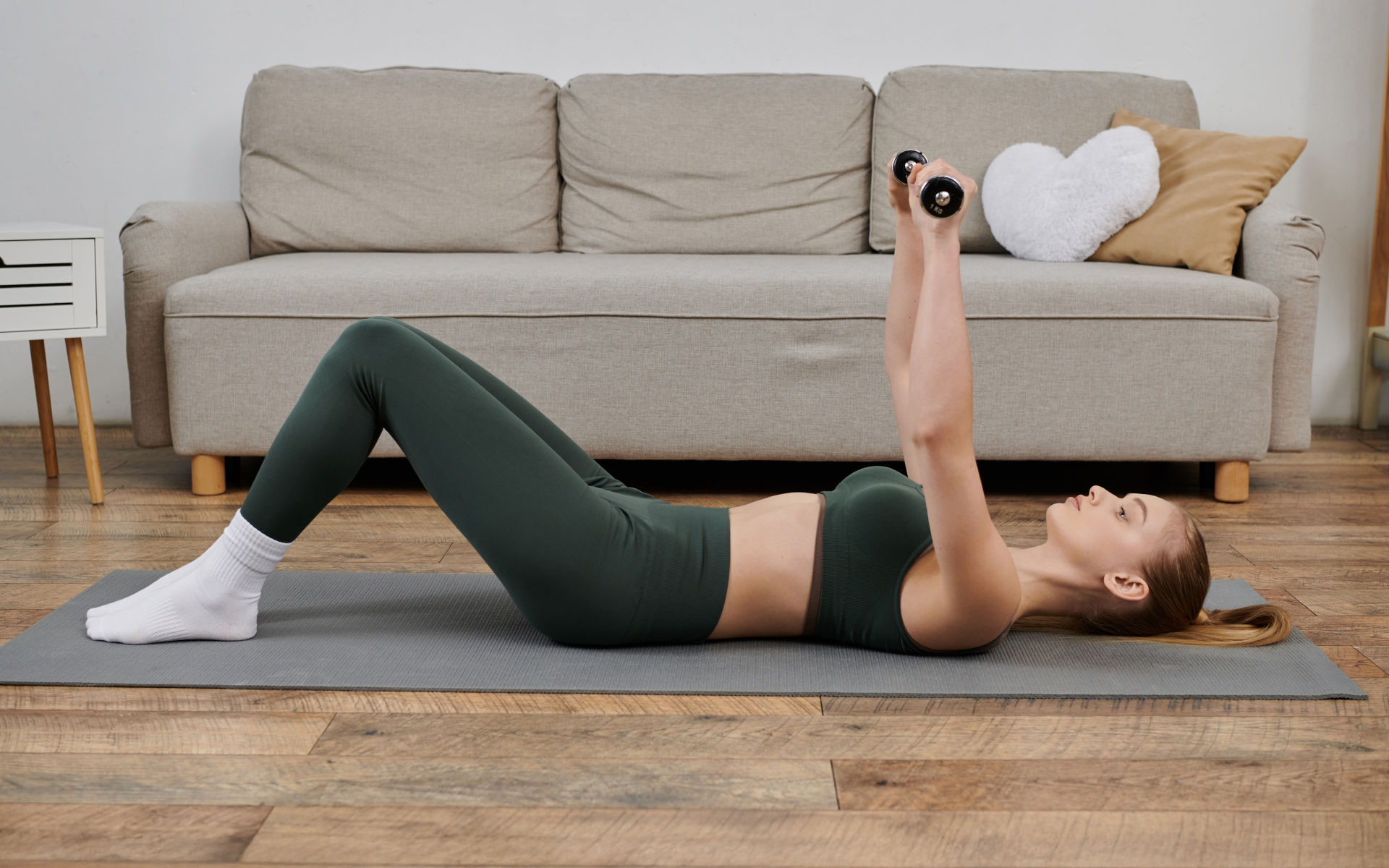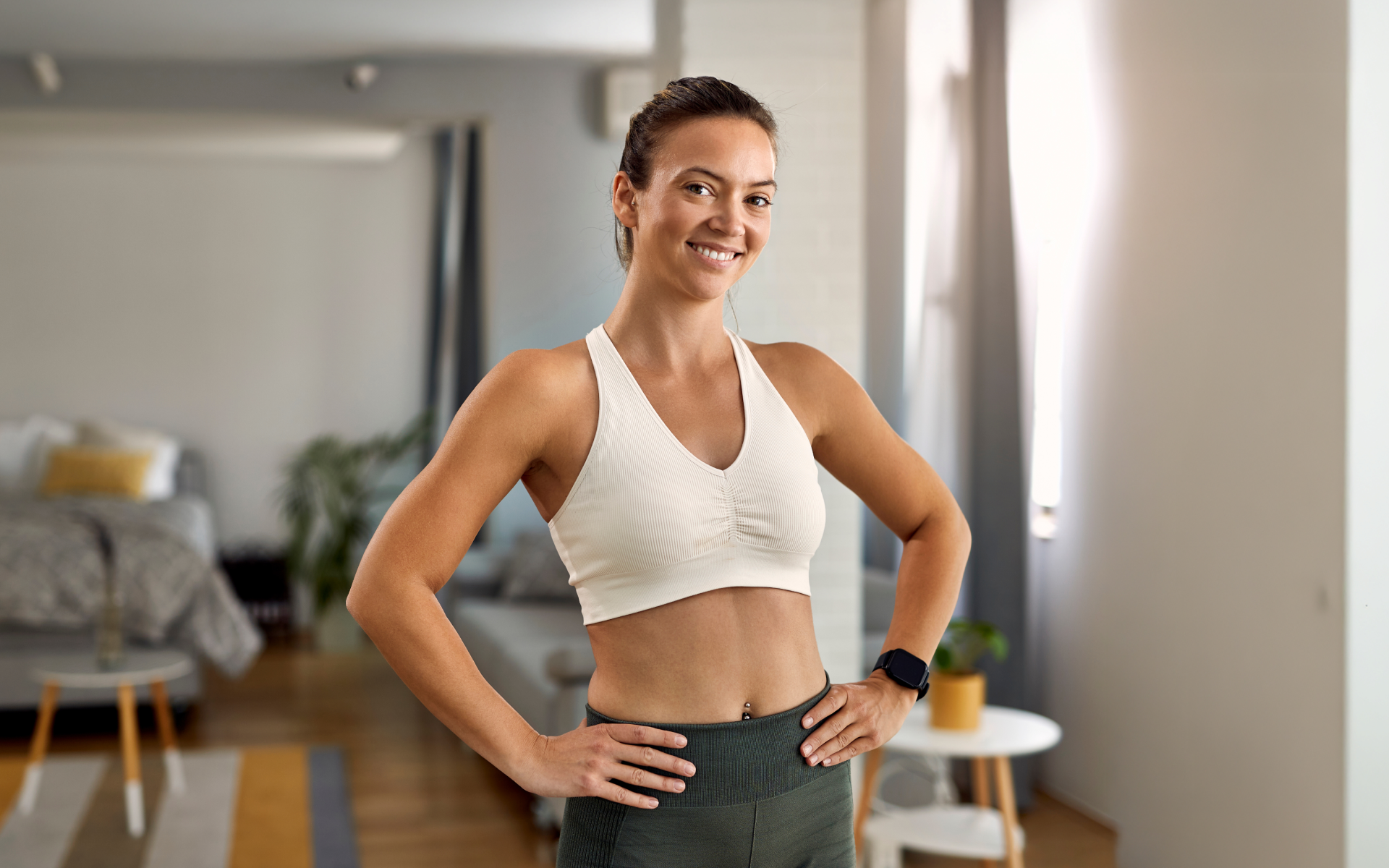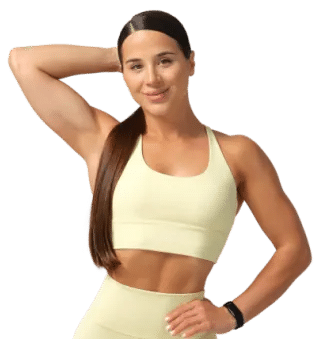Starting a gym routine can feel like learning a new language. You see unfamiliar equipment, hear terms such as “reps” and “sets”, and wonder where to even begin. This guide is designed to translate the complex world of fitness into a clear, actionable plan. We’ll break down exactly how to start, what to do, and how to progress safely and effectively.
This is more than just a list of exercises – it’s a complete roadmap. We’ll cover the fundamental principles of training, how to structure your workouts, and the recovery strategies that support your efforts. By the end, you’ll have a comprehensive understanding of how to make the gym work for you.
How to Start a Gym Routine for a Female?
Initiating a gym routine is a process of building habits and confidence. The goal isn’t to go from zero to one hundred overnight, but to establish a sustainable practice. Here’s a structured approach to get started.
1. Define Your “Why”
Before you lift a single weight, understand your motivation. Are you aiming for improved health, increased strength, better mental clarity, or fat loss? Your “why” is your anchor.
On days when motivation is low, connecting back to your core reason for starting will keep you on track. Write it down and place it somewhere you will see it daily. This simple act reinforces your commitment.
2. Set Realistic, Measurable Goals
Vague goals such as “get fit” are difficult to track. Instead, set specific, measurable, achievable, relevant, and time-bound (SMART) goals (1).
- Specific: Instead of “get stronger”, aim for “complete three full-body workouts per week”.
- Measurable: Instead of “lose weight”, aim for “lose 1-2 pounds per week” or “increase my goblet squat weight by 5 pounds in four weeks”.
- Achievable: If you’re new to the gym, committing to six days a week is likely not sustainable. Start with two or three days. You can always add more later.
- Relevant: Ensure your goals align with your “why”. If your goal is to find a gym routine for weight loss and toning for females, your actions should focus on consistent resistance training and supportive nutrition.
- Time-Bound: Set a deadline. For example, “I will consistently follow my 3-day workout plan for the next 8 weeks”.
3. Choose the Right Gym Environment
The environment you train in matters. Visit a few gyms before committing. Consider the following:
- Location and Hours: Is it convenient for your home or work? Does it open at times that fit your schedule?
- Equipment: Does it have the basic equipment you will need? Look for a good selection of dumbbells, barbells, squat racks, cable machines, and cardio equipment. A good gym machine workout plan for female beginners is a great starting point, so make sure the machine section is well-maintained.
- Atmosphere: Does the gym feel welcoming or intimidating? Some gyms have women-only sections, which can be a comfortable starting point for many.
- Cost: Does it fit your budget? Look out for hidden fees or long-term contracts.
BetterMe: Health Coaching app helps you achieve your body goals with ease and efficiency by helping to choose proper meal plans and effective workouts. Start using our app and you will see good results in a short time.
4. Schedule Your Workouts
Treat your gym sessions like any other important appointment. Block them out in your calendar. Decide which days and times work best for you and stick to them.
Consistency is the most critical factor for success in the beginning. Aim for 2-3 sessions per week, with at least one rest day in between to allow your body to recover and adapt.
5. Invest in a Brief Orientation
Most gyms offer a free orientation session. Take it. This is your chance to get a tour of the facility, learn how to adjust the machines, and ask basic questions. It demystifies the equipment and reduces the initial feeling of being overwhelmed. Even a 30-minute session can dramatically boost your confidence.
For those who prefer the convenience of exercising at home, creating an effective routine is entirely possible. Learn more about how to set up your space and choose the right exercises by checking out our guide to a home gym workout plan.
Read more: Calisthenics Workout for the Whole Body: A Simple Plan with Significant Results
What to Do in the Gym as a Beginner Woman?
Once you’re in the gym, the key is to focus on mastering fundamental movement patterns. These are the building blocks of all other exercises and provide the most benefit for your time and effort.
As a beginner, your body is primed for rapid adaptation, primarily through neural improvements. This means that your brain and nervous system become more efficient at recruiting your muscles, which leads to quick strength gains in the first 4-8 weeks (2).
Prioritize Compound Movements
Compound exercises work multiple muscle groups and joints simultaneously. They are highly efficient for building strength, burning calories, and improving coordination (3). Your workouts should be built around these core patterns:
- Squat: This trains your quads, glutes, and core (4). Start with goblet squats, holding a single dumbbell against your chest. This teaches the upright torso position that is needed for all squat variations. Leg press machines are also a great alternative.
- Hinge: This pattern involves bending at the hips and is essential for training the glutes and hamstrings. The Romanian deadlift (RDL) is the best starting point (5). Use light dumbbells and focus on feeling a stretch in your hamstrings.
- Push: This involves pushing weight away from your body. It includes horizontal pushes (such as a dumbbell bench press or machine chest press) to train the chest, shoulders, and triceps, and vertical pushes (such as a dumbbell overhead press or shoulder press machine) to target the shoulders (6).
- Pull: This involves pulling weight toward your body. Horizontal pulls (such as a seated cable row or one-arm dumbbell row) train the muscles of your upper and mid-back. Vertical pulls (such as a lat pulldown or assisted pull-up) train your latissimus dorsi, the large muscles that give your back width (7).
- Lunge/Single-Leg Stance: Exercises such as lunges and split squats improve balance and train each leg independently, which helps correct strength imbalances. Start with bodyweight and add dumbbells as you get stronger.
- Core Bracing: Your core is more than just your abs – it’s a 360-degree system that stabilizes your spine (8). Exercises such as planks, dead bugs, and Pallof presses teach you how to create and hold tension, which is essential for safely performing heavy lifts.
Learn Proper Form First
Before you even think about adding significant weight, your priority is form. Poor form is inefficient and a leading cause of injury.
- Control the Tempo: Use a controlled speed for each repetition. A good rule of thumb is a 2-1-1 tempo: take two seconds to lower the weight, pause for one second at the bottom, and take one second to lift it. This builds control and maximizes muscle engagement (9).
- Train with Intent: Focus on the muscle you are trying to work. This is known as the mind-muscle connection. For example, during a lat pulldown, think about pulling your elbows down and back, squeezing your back muscles.
- Leave Your Ego at the Door: Start with light weights, or even just your body weight. You’re there to train your body, not to impress anyone. Mastering the movement pattern with a light load ensures you build a strong and safe foundation.
Understand Reps, Sets, and Rest
- Reps (Repetitions): One complete motion of an exercise. For beginners who are aiming for both strength and muscle growth (hypertrophy), a range of 8-15 reps is ideal (10).
- Sets: A group of repetitions. You perform a set, rest, and then perform another set. For beginners, 2-3 sets per exercise is a perfect starting point (11).
- Rest: The time you take between sets. For most exercises, resting 60-90 seconds is sufficient to allow your muscles to recover for the next set while keeping the workout efficient (12).
As you become more comfortable, you may want to explore different ways to structure your training week. For a comprehensive look at how to organize your workouts for maximum results, explore our 7-day gym workout plan.
Should Beginners Do Cardio or Weights First?
This is a common question, and the answer will depend on your primary goal. The order in which you perform cardio and resistance training can influence the results you get from each.
If Your Primary Goal Is Strength and Muscle Gain, Lift Weights First
Resistance training is a neurologically demanding activity. To lift weights effectively and safely, your nervous system needs to be fresh to recruit muscle fibers maximally (13).
Performing a long or intense cardio session beforehand can deplete glycogen stores (your muscles’ main energy source) and induce central nervous system fatigue. This can reduce your ability to lift with maximal force, compromising the quality of your strength workout (14).
A 2014 meta-analysis published in Sports Medicine confirmed that performing endurance exercise before strength training can impair strength development, especially for lower-body exercises (15). The effect is more pronounced when the cardio session is high-intensity or long-duration.
Therefore, if building muscle and strength is your priority – which it should be for most beginners seeking to change their body composition – dedicate your energy to lifting when you are freshest.
If Your Primary Goal Is Cardiovascular Endurance, Do Cardio First
If you are training for a 5k or want to improve your cardiovascular fitness above all else, it makes sense to perform your run, cycle, or swim when you have the most energy.
Doing a heavy lifting session before a long run can leave your legs feeling heavy and fatigued, compromising your running form and performance (16).
The Balanced Approach for General Fitness
For most beginners, the goal is general health and fitness, which includes both strength and cardiovascular benefits. In this case, a balanced approach works best:
- Warm-up (5-10 minutes): Always start with a dynamic warm-up. This includes light cardio (such as a brisk walk on the treadmill or cycling) to increase your heart rate and body temperature, followed by dynamic stretches (such as leg swings and arm circles) to prepare your joints and muscles for the work ahead (17).
- Weights (45-60 minutes): Perform your full-body resistance training routine. This is the most technically demanding part of your workout, so do it when you are mentally and physically fresh.
- Cardio (15-30 minutes): Finish your session with a low-to-moderate intensity cardio session. This is enough to reap the cardiovascular benefits without being so taxing that it interferes with your lifting. A brisk walk on an incline, a steady pace on the elliptical, or a light jog are all excellent options.
Another effective strategy is to separate your lifting and cardio sessions entirely.
You could lift on Mondays, Wednesdays, and Fridays, and do cardio sessions on Tuesdays and Thursdays. This will allow you to focus all your energy on one type of training per session, which can be optimal for both recovery and performance.
This approach is also great for anyone wanting to follow a beginners gym workout for female weight loss program, as it ensures high-quality sessions for both calorie-burning cardio and metabolism-boosting strength training.
Whether you’re a workout beast or just a beginner making your first foray into the world of fitness and dieting – BetterMe has a lot to offer to both newbies and experts! Install the app and experience the versatility first-hand!
What Is a Step-by-Step Gym Beginner Workout Plan for Females?
This 8-week program is designed to build a strong foundation. It operates on a full-body training schedule, which is highly effective for beginners as it stimulates muscles multiple times per week, promoting rapid learning and adaptation.
The core principle for progression is called double progression. This is a simple and highly effective method (18). Here is how it works:
- You select a rep range for an exercise (e.g. 8-12 reps).
- You choose a weight that allows you to complete your sets within that rep range.
- You stick with that same weight until you can successfully complete all of your sets at the top end of the rep range (e.g. 3 sets of 12 reps).
- Once you achieve this, you increase the weight by the smallest increment possible (e.g. 2.5-5 lbs) in your next session. The new, heavier weight will likely drop your reps back down to the lower end of the range (e.g. 8-9 reps), and you repeat the process.
Weeks 1-4: Foundation and Form
The goal of the first month is to learn the movements and build consistency. Focus on excellent form and controlling the weight.
- Frequency: 3 non-consecutive days per week (e.g. Monday, Wednesday, Friday)
- Sets per exercise: 2
- Rep Range: 10-15 reps
- Rest between sets: 60-90 seconds
- Effort: Stop each set when you feel you have 2-3 good reps left in the tank. This is known as reps in reserve (RIR). It ensures you are training hard enough to stimulate progress without going to failure, which can hinder recovery.
Workout A
- Goblet squat: 2 sets of 10-15 reps
- Dumbbell bench press: 2 sets of 10-15 reps
- Lat pulldown (neutral or wide grip): 2 sets of 10-15 reps
- Machine hamstring curl: 2 sets of 10-15 reps
- Seated cable row: 2 sets of 10-15 reps
- Plank: 2 sets, hold for 30-60 seconds
Workout B
- Glute bridge or hip thrust (body weight or light weight): 2 sets of 12-15 reps
- Leg press: 2 sets of 10-15 reps
- Face pull (with ropes on cable machine): 2 sets of 12-15 reps
- Dumbbell overhead press (seated): 2 sets of 10-15 reps
- One-arm dumbbell row: 2 sets of 10-15 reps (per arm)
- Dead bug: 2 sets of 10-12 reps (per side)
You’ll alternate between Workout A and Workout B. For example:
- Week 1: A, B, A
- Week 2: B, A, B
Weeks 5-8: Building Strength and Intensity
In the second month, increase the challenge by adding volume (an extra set) and working in a slightly lower rep range on the main lifts, which is better for strength development.
- Frequency: 3 non-consecutive days per week
- Sets per exercise: 3
- Rep Range: 8-12 reps
- Rest between sets: 60-90 seconds
- Effort: Push a little closer to failure, aiming for 1-2 RIR on your last set of each exercise.
Workout A
- Goblet squat or leg press: 3 sets of 8-12 reps
- Dumbbell bench press: 3 sets of 8-12 reps
- Lat pulldown (neutral or wide grip): 3 sets of 8-12 reps
- Romanian deadlift (with dumbbells): 3 sets of 10-12 reps
- Seated cable row: 3 sets of 10-12 reps
- Pallof press: 3 sets of 10-12 reps (per side)
Workout B
- Hip thrust (with barbell or dumbbell): 3 sets of 8-12 reps
- Dumbbell split squat or reverse lunge: 3 sets of 8-12 reps (per leg)
- Face pull (with ropes on cable machine): 3 sets of 12-15 reps
- Dumbbell overhead press (seated): 3 sets of 8-12 reps
- One-arm dumbbell row: 3 sets of 8-12 reps (per arm)
- Plank: 3 sets, hold for max time
Use the double progression method throughout these 8 weeks. A similar structure can be adapted for a workout plan for female beginners at home by substituting exercises with dumbbells, bands, or bodyweight equivalents.
After completing this 8-week program, your needs will become more individualized. To continue making progress, it may be time to consider a program that’s tailored specifically to your goals, recovery capacity, and preferences. You can learn more about creating your next level of training by exploring a custom workout plan.
How Much Water Should I Drink During a Workout?
Proper hydration is essential for performance, safety, and recovery. Dehydration of just 2% of your body weight can lead to a noticeable decrease in performance, including reduced strength, power, and endurance (19).
There’s no single magic number for how much water to drink during a workout, as needs vary based on the individual, the intensity and duration of the workout, and the ambient temperature. However, we can use evidence-based guidelines from organizations such as the American Council on Exercise (ACE) to create a solid strategy.
Hydration Before, During, and After Exercise
- Before Your Workout: Don’t start your workout already dehydrated.
- Drink 17-20 ounces (about 500-600 ml) of water 2-3 hours before exercising.
- Drink another 8 ounces (about 240 ml) 20-30 minutes before you start.
- During Your Workout: The goal is to replace fluids lost through sweat.
- Aim to drink 7-10 ounces (about 200-300 ml) of water every 10-20 minutes of exercise.
- This equates to a few large gulps of water at regular intervals. Avoid waiting until you feel thirsty. Thirst is a sign that you’re already beginning to dehydrate. Keep a water bottle with you and sip from it between sets or during rest periods.
- After Your Workout: Rehydration is a key part of recovery.
- For every pound of body weight lost during exercise (which is primarily water), you should drink 20-24 ounces (600-720 ml) of fluid. If you don’t have a scale, a simpler method is to continue drinking water steadily over the next few hours until your urine is a pale, clear color.
For most beginner workouts lasting around 60 minutes, plain water is perfectly sufficient. Sports drinks that contain electrolytes and carbohydrates are generally only necessary for intense exercise that lasts longer than 90 minutes.
Read more: Beginner Glute Building Workout Plan: 6 Exercises That Actually Work
How Long Does It Take to See Gym Results?
The timeline for seeing results from the gym varies from person to person and depends on factors such as consistency, training intensity, nutrition, genetics, and sleep. However, we can break down the expected timeline into distinct phases based on physiological adaptations.
Phase 1: The First 4-8 Weeks (The Neurological Phase)
What you will feel: You will feel significantly stronger, but you may not see major visible changes in muscle size just yet.
This initial period is dominated by neural adaptations. Your brain and central nervous system become much more efficient at communicating with your muscles (20). You’re essentially “learning” how to perform the movements.
- Improved Coordination: The exercises will feel less awkward.
- Increased Strength: You’ll be able to lift more weight quite quickly. This isn’t because your muscles have grown much, but because you’re better at recruiting the muscle fibers you already have.
- Enhanced Mood and Energy: Regular exercise has a profound and almost immediate impact on neurotransmitters like endorphins and dopamine. You’ll likely notice improved mood, better sleep, and more energy throughout the day.
Phase 2: 2-6 Months (The Hypertrophy Phase)
What you will see: This is when visible changes in your body composition begin to appear.
After the initial neural gains, muscular hypertrophy (the growth of muscle fibers) becomes the primary driver of strength increases (21). Assuming you’re training consistently and eating enough protein, you’ll start to notice:
- Increased Muscle Definition: Your muscles will look and feel firmer. This is often described as “toning”.
- Changes in Body Composition: You may notice your clothes fitting differently. Even if the number on the scale doesn’t change much, you’re likely losing fat and gaining muscle, which is a more compact tissue. This is a key outcome when creating a gym routine for weight loss and toning for females.
- Steady Strength Progression: Your strength gains will be slower and more linear than in the first phase, but they’ll be consistent if you follow a progressive overload plan.
Phase 3: 6+ Months (The Sustainable Lifestyle Phase)
What you will achieve: Long-term, sustainable results and a deep sense of physical competence.
By this point, working out has become an ingrained habit. The physical changes are more pronounced, but the mental and health benefits are just as significant.
- Significant Body Composition Changes: You will have built a noticeable amount of lean muscle, which boosts your resting metabolism (22).
- Increased Bone Density: Resistance training is one of the most effective ways to build and maintain strong bones (23), which is important for helping women prevent osteoporosis later in life (24).
- Confidence and Resilience: The discipline and strength you build in the gym often translate to other areas of your life.
Remember, consistency trumps intensity. A beginners’ gym workout female weight loss plan that you can stick to for 6 months will produce far better results than a perfect, intense plan that you quit after 3 weeks.
The best time of day to work out is the time you can consistently stick to. Research has shown minimal difference in outcomes between morning and evening training (25). Morning workouts can be great for consistency before the day gets busy, while some people feel stronger and more energized in the afternoon. Choose what suits your schedule and energy levels best. After a workout, aim to consume a meal that contains both protein and carbohydrates within 1-2 hours. Protein is essential for repairing and building muscle tissue – aim for 20-40 grams. Carbs replenish the glycogen stores used up during the workout (26). A simple and effective post-workout meal could be grilled chicken with sweet potato, a protein shake with a banana, or Greek yogurt with berries. Walking is an excellent form of low-impact cardiovascular exercise that improves heart health, helps with weight management, and reduces stress (27). It can certainly help you get into better “shape”. However, for a well-rounded fitness level that includes strength, muscle tone, and improved metabolism, walking should be combined with resistance training. This depends on your goals. Walking is fantastic for cardiovascular health and daily activity (27). However, the gym provides the necessary tools for resistance training, which is superior for building muscle, increasing strength, and boosting metabolic rate (28). For optimal health and body composition results, the ideal approach is a combination of both: using the gym for structured strength workouts and incorporating walking for daily activity and cardio. If you’re starting a gym beginner workout plan for females at home, walking is an easy and effective addition.Frequently Asked Questions
What’s the best time of day to work out?
What should you eat after a workout?
Can you get in shape by just walking?
Is it better to walk or go to the gym?
The Bottom Line
Embarking on a fitness journey is a powerful act of self-investment. By following this structured, evidence-based plan, you’re not just exercising, you’re laying a foundation of strength, health, and confidence that will serve you for years to come.
Remember that every expert was once a beginner. Embrace the learning process, celebrate your progress, and trust that with consistency and intelligent effort, you’ll achieve your goals.
The journey starts with a single step, and you’ve already taken it by seeking out the knowledge to begin.
DISCLAIMER:
This article is intended for general informational purposes only and does not serve to address individual circumstances. It is not a substitute for professional advice or help and should not be relied on for making any kind of decision-making. Any action taken as a direct or indirect result of the information in this article is entirely at your own risk and is your sole responsibility.
BetterMe, its content staff, and its medical advisors accept no responsibility for inaccuracies, errors, misstatements, inconsistencies, or omissions and specifically disclaim any liability, loss or risk, personal, professional or otherwise, which may be incurred as a consequence, directly or indirectly, of the use and/or application of any content.
You should always seek the advice of your physician or other qualified health provider with any questions you may have regarding a medical condition or your specific situation. Never disregard professional medical advice or delay seeking it because of BetterMe content. If you suspect or think you may have a medical emergency, call your doctor.
SOURCES:
- Making SMART goals smarter (2013, researchgate.net)
- Muscle hypertrophy, hormonal adaptations and strength development during strength training in strength-trained and untrained men (2003, link.springer.com)
- Compound Exercises (n.d., physio-pedia.com)
- A Biomechanical Review of the Squat Exercise: Implications for Clinical Practice (2024, pmc.ncbi.nlm.nih.gov)
- A Comparison of Muscle Recruitment Across Three Straight-Legged, Hinge-Pattern Resistance Training Exercises (2023, pmc.ncbi.nlm.nih.gov)
- The Biomechanics of the Push-up: Implications for Resistance Training Programs (2012, journals.lww.com)
- The Pull-up (2014, journals.lww.com)
- Core strengthening (2004, archives-pmr.org)
- The Influence of Movement Tempo During Resistance Training on Muscular Strength and Hypertrophy Responses: A Review (2021, link.springer.com)
- Loading Recommendations for Muscle Strength, Hypertrophy, and Local Endurance: A Re-Examination of the Repetition Continuum (2021, pmc.ncbi.nlm.nih.gov)
- Progression Models in Resistance Training for Healthy Adults (2009, journals.lww.com)
- Rest Interval between Sets in Strength Training (2009, link.springer.com)
- The knowns and unknowns of neural adaptations to resistance training (2021, link.springer.com)
- Central and Peripheral Fatigue in Physical Exercise Explained: A Narrative Review (2022, pmc.ncbi.nlm.nih.gov)
- Increases in Lower-Body Strength Transfer Positively to Sprint Performance: A Systematic Review with Meta-Analysis (2014, link.springer.com)
- The effects of strength training and endurance training order on running economy and performance (2013, researchgate.net)
- Dynamic Warm-ups Play Pivotal Role in Athletic Performance and Injury Prevention (2025, sciencedirect.com)
- Mesocycle Progression in Hypertrophy: Volume Versus Intensity (2020, journals.lww.com)
- Practical Hydration Solutions for Sports (2019, pmc.ncbi.nlm.nih.gov)
- Neuromuscular adaptations to resistance training in elite versus recreational athletes (2025, frontiersin.org)
- Adaptations to Endurance and Strength Training (2018, pmc.ncbi.nlm.nih.gov)
- Increasing muscle mass to improve metabolism (2013, pmc.ncbi.nlm.nih.gov)
- Effects of Resistance Exercise on Bone Health (2018, e-enm.org)
- Osteoporosis in Females (2025, ncbi.nlm.nih.gov)
- Best Time of Day for Strength and Endurance Training to Improve Health and Performance? A Systematic Review with Meta-analysis (2023, sportsmedicine-open.springeropen.com)
- Nutritional Strategies to Improve Post-exercise Recovery and Subsequent Exercise Performance: A Narrative Review (2025, link.springer.com)
- Walking for Exercise (2023, nutritionsource.hsph.harvard.edu)
- Strength training: Get stronger, leaner, healthier (2023, mayoclinic.org)
